Recent Storm Damage Posts
4 Steps To Repair a Storm-Damaged Roof
8/24/2022 (Permalink)
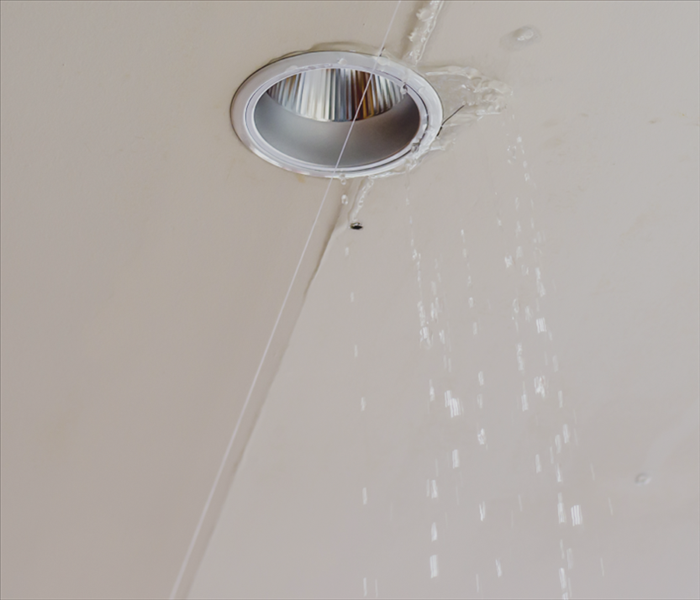 Water that leaks through a roof can damage building materials and the contents of a structure.
Water that leaks through a roof can damage building materials and the contents of a structure.
Four Steps to Restoring a Storm-Damaged Roof
Hail, high winds, and other adverse weather conditions can cause costly damage to the roof of a residence in Auburn, WA. Here are four steps you can take to address roof damage.
1. Document the Damage
Extensive photographic or video evidence of hail, wind, or other storm damage will be necessary if you plan to file an insurance claim for a damaged roof. It may also be necessary to demonstrate a history of regular inspections and maintenance to avoid liability on the basis of negligence.
2. Cover Any Breaches
Any damaged roofing materials or missing shingles may result in leaks that affect the attic, insulation, and ceilings of a structure. As soon as signs of roof damage become apparent, you should make arrangements for mitigation. An all-in-one restoration service or roofing company can tarp over the damaged portions of the roof to protect against wind damage and leaks.
3. Arrange for Repair
Mitigation is only a temporary protective measure until repairs are possible. You should schedule roof repair as soon as possible to reduce the risk of further exterior and interior damage.
4. Restore Interior Damage
Water that leaks through a roof can damage building materials and the contents of a structure. This water is generally considered contaminated Category Two gray water. Cleanup should involve disinfection, tearing out saturated porous materials, and thoroughly drying the affected area prior to reinstalling materials such as drywall or insulation.
These four steps will guide you through the quickest and most effective ways to fix a damaged roof after adverse weather. It is a good idea to check for roof damage after every severe storm. Regular professional inspections and maintenance can also reduce the risk of a leak or collapse due to cumulative damage. A restoration company that specializes in storm damage can quickly clean up, restore and rebuild a residence located in Auburn, WA.
3 Essential Tips When Your Business Experiences Flood Damage
8/15/2022 (Permalink)
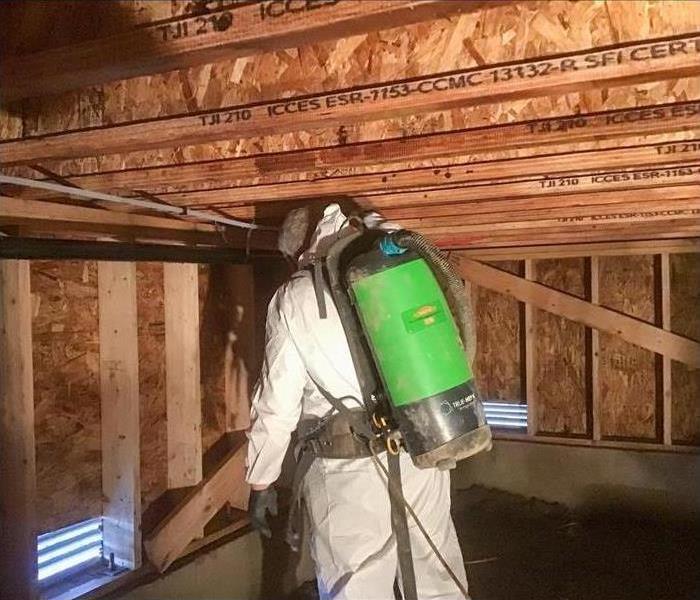 Checking for mold growth after a flood.
Checking for mold growth after a flood.
Flood Damage In Your Business
When flood damage hits your business in Auburn, WA, your work life may come to an abrupt halt and your priorities have to shift to recovering from the disaster. It's essential to move quickly getting things cleared up, but there are a few important things to keep in mind as you go about content cleaning.
1. Avoid Turning On Electronics
Although some or all of your electronic devices may have been caught up in the flood, there's a chance they would survive it if they're handled correctly. Most importantly, do not try to turn them back on yet. Instead, they need to be carefully restored and thoroughly dried first, at which point they may be able to turn on and operate normally. As with any restorations after water damage, though, time matters. The longer they remain water damaged, the more extensive the repairs will be or the greater the likelihood that replacement will be necessary.
2. Remove Unharmed Items From Danger
Items not already damaged in the storm should be removed from the vicinity until all has been resolved. Storm damage can bring black water with it, so the more you can save from coming into contact with it the better. This will also make content cleaning easier as there will be fewer things to clean and restore or dispose of.
3. Steer Clear of Moldy Areas
If enough time passes while areas stay wet, mold will begin to grow. Avoid messing with or placing items near mold, as the spores can shoot out and latch onto more surfaces. Mold needs to be properly remediated to prevent it from spreading.
You can't afford for your business to stay down for long. Every day may mean lost revenue. If the damage is extensive or you need it fixed faster than you can manage, it might be time to turn to professional content cleaning services to put your business right again.
4 Steps for Preventing Major Roof Repairs After a Storm
7/25/2022 (Permalink)
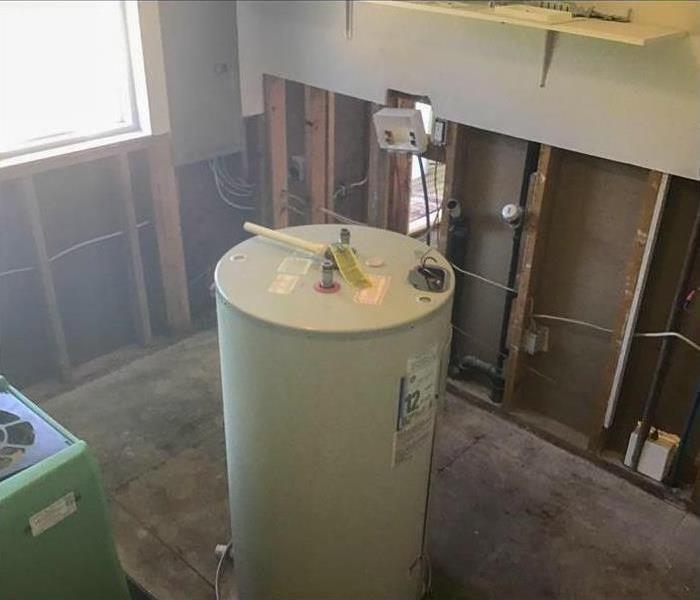 It’s prudent to have a professional perform a thorough inspection
It’s prudent to have a professional perform a thorough inspection
Four Steps To Take After Experiencing A Storm
All homeowners hope to avoid costly repairs to their homes, and roof repair is certainly a costly project. Fortunately, there are some things that Enumclaw, WA, homeowners can do to ensure that their roof is safe and in good condition.
1. Inspection
There are storm restoration specialists who have the training and skills necessary to ensure that your roof and home are free from damage after a storm. Even if a storm seems to have caused little damage, such as hail or wind, it’s prudent to have a professional perform a thorough inspection. Your roof should be inspected in the following three areas:
- Roof membrane
- Insulation
- Flashing
A professional will also document the event, including storm details and identified roof damage. These details can assist with insurance claims.
2. Mitigation
Mitigation is the process of reducing the amount of harm caused to your roof. Though hail and wind damage may seem minor, a weakened roof can lead to more expensive repairs or replacement in the future. Storm restoration professionals can perform mitigation techniques that will extend the life of your roof.
3. Drying
A major part of roof repair includes structural drying. All building materials need to be inspected to understand the extent of water damage. Water is pervasive and can cause additional issues like mold. The entire roof system, including the membrane, insulation, and flashing, should be inspected for water. Fortunately, emergency technicians are available 24/7 to assist with unexpected storms.
4. Restoration
The final step is restoration. Restoration specialists will ensure that the roof and your belongings are free from hazards. Building materials, carpeting, rugs and other belongings may need to be replaced due to water damage.
Homeowners should have a professional roof inspection done after a storm. Storm restoration specialists can help homeowners identify roof repair that needs to be done.
3 Facts That Will Make You Want Flood Insurance
7/15/2022 (Permalink)
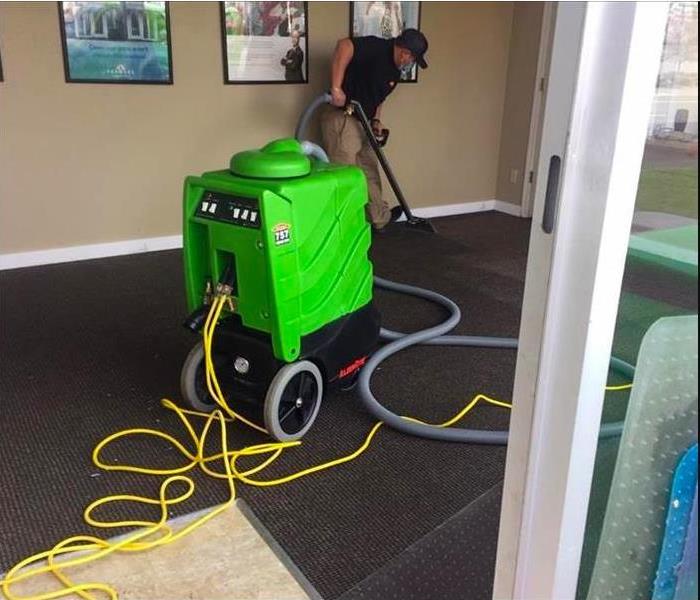 Commercial water mitigation in Black Diamond, WA.
Commercial water mitigation in Black Diamond, WA.
Protect Your Business With Flood Policy
Business owners from high-risk flood zones have probably seen commercial insurance policies that offer protection against natural disasters. Meanwhile, many business owners in Black Diamond, WA, do not understand this option's importance. These people are too worried about the cost of the policy, which can range from a reasonable FEMA policy to a high-end private one. They often overlook the fact that a flood can cause excessive damage that needs to be restored by a storm remediation company. If you are in this boat, some facts may convince you that flood insurance is a good idea.
1. Property Insurance Doesn’t Cover Flooding
Even commercial insurance only covers damage from rainwater that has not touched the ground. For instance, if a tree goes through your roof while a storm rages and rainwater ruins your floor, it is covered. Once water hits the ground, it becomes a flood and is no longer covered. In other words, a rising creek caused by rain is not covered. Only flood insurance will cover this type of situation.
2. Every Business Is at Risk of Flooding
Rather than if, you should ask how much flood risk you have. The national flood maps can give you an idea of your exact risk. Certain zones are high-risk. Others are medium- or low-risk. Remember that low does not mean no. You are still at risk for flooding in low-risk zones.
3. Government Aid Is Not Insurance
Unlike commercial insurance, government aid is primarily loans that you'll need to repay. Plus, you cannot receive aid unless your area is federally declared a disaster zone, which happens for only a few major flooding events.
Unfortunately, standard insurance doesn't cover flooding. To protect your business, you'll need a flood policy. To make things worse, you can't rely on government aid for your company. These are simply loans that you will need to pay back. Plus, you can't always receive these loans. Since every business is in a flood zone, proper insurance is a must. This ensures that any damage you incur to do a flood is covered.
Best 4 Tips To Prevent Mold After a Flood
6/30/2022 (Permalink)
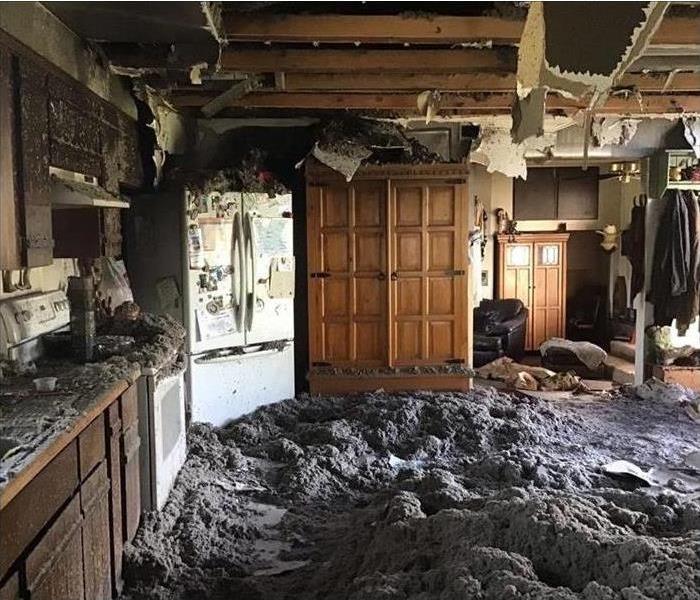 If your home or business experiences storm or flood damage, call our SERVPRO of Auburn/Enumclaw team today!
If your home or business experiences storm or flood damage, call our SERVPRO of Auburn/Enumclaw team today!
Best 4 Flood Mold Prevention Tips
Flooding in your house is bad, and mold growth is even worse. Mold develops in moist environments. This is why it normally appears after a flood in Black Diamond, WA. One of the first things you must do is clean it up as soon as possible. Below is some practical advice for safely preventing or removing this fungus from your residence.
1. Wear Protective Gear
Think of your safety first. Before cleaning up anything in your home, make sure you have the right protective equipment. These items include:
• Gloves
• Goggles
• Masks
These supplies go a long way to protect your skin, mouth, nose and eyes. Generally speaking, it's best to hire a professional mold remediation company to tackle the job.
2. Toss Out Items
Throw away personal possessions that are damaged beyond repair. Otherwise, place salvageable goods outdoors so they can dry. It normally takes wet materials up to 48 hours to air out. Afterward, bring them inside and wipe off the mold.
3. Dry Your House
Make sure it's safe to use electricity in your home after the flood. Air out your home by opening windows, using house fans and turning on dehumidifiers. This removes moisture from the house, which prevents mold growth from developing in your home.
4. Clean Away the Mold
Scrub or wipe away mold off your items using bleach. Take safety precautions when doing this. Make sure you wear a mask, gloves and goggles. Keep the windows open. Dilute every one cup of bleach with one gallon of water. As a best practice, never mix bleach with ammonia.
Free Your Home From Mold Growth
In some cases, mold is something you can clean up on your own. However, it requires that you follow strict safety precautions to properly prevent or remove mold from your home. If you don't feel confident taking this on as a DIY project, hire professional technicians who are experienced in mold removal and restoration.
The Ultimate First Aid Kit Checklist for Businesses
4/1/2022 (Permalink)
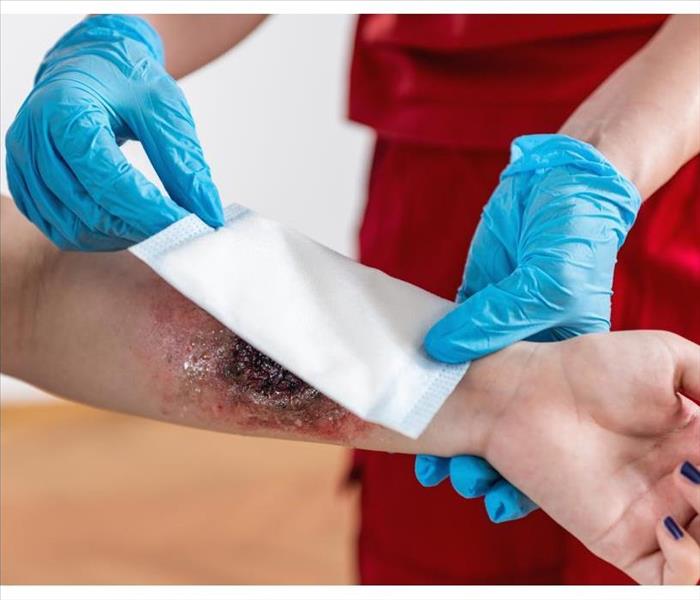 Bandages, tape, tools, medicines, blankets, food, and water are all vital to stocking your business for any situation, no matter how unexpected
Bandages, tape, tools, medicines, blankets, food, and water are all vital to stocking your business for any situation, no matter how unexpected
The Ultimate Business First Aid Kit Checklist
If disaster strikes, is your business prepared? There are certain requirements for a first aid kit in a commercial building. This checklist includes all of those and more. Make sure your emergency kit is up to par.
Precautionary Measures
The first thing you should do during an emergency is prevent the spread of infection. Any open wound needs to be handled with care as not to spread any bacteria. Furthermore, if there is a weather event that has affected the building's structure, you want to make sure inhabitants aren't breathing in dangerous particles.
- Masks
- Gloves
- Wound cleaners
This is the first line of defense. Don't skip this step. A damage and remediation specialist can offer suggestions.
Bandages and Gauze
Another essential need involves wound bandaging. Here are the recommendations:
- Gauze pads (medium and large)
- Gauze roller bandage (2 inches wide)
- Bandages (boxed and triangular)
- Two elastic wraps
Injuries can vary in size, so it's best to keep a variety.
Tools
It's difficult to predict the tools needed in each instance. Instead, keep an array, such as:
- Resuscitation devices
- Tweezers
- Scissors
- Tongue depressors
- Splints
- Adhesive tape
Then, you will always be prepared, regardless of the wound.
Medicines
Keep treatments for common afflictions handy. Some include:
- Antihistamines
- Anti-inflammatory pills
- Ointments
These can be helpful for ailments ranging from burns to a minor headache. Just make sure to have written consent to administer medications.
Shelter, Warmth, and Sustenance
In the event of an emergency, you may lose access to basic human needs. Make sure your kit contains:
- Blankets
- Nonperishable foods
- Water
This way, if your building is damaged, you can keep those inside safe for long periods of time.
Emergency Instructions
Always provide instructions in your first aid kit for contacting emergency assistance services. It's also advisable to include a content list with guidelines for use. Make sure items aren't out of date or damaged. Also, consider including a building layout and any special needs notes. Furthermore, always check your local requirements for emergency preparedness in Auburn, WA.
Making preparations before the disaster is crucial. Every first aid kit should have items to prevent the spread of bacteria while dressing wounds. Bandages, tape, tools, medicines, blankets, food, and water are all vital to stocking your business for any situation, no matter how unexpected.
5 Tips for Storm Preparation
3/9/2022 (Permalink)
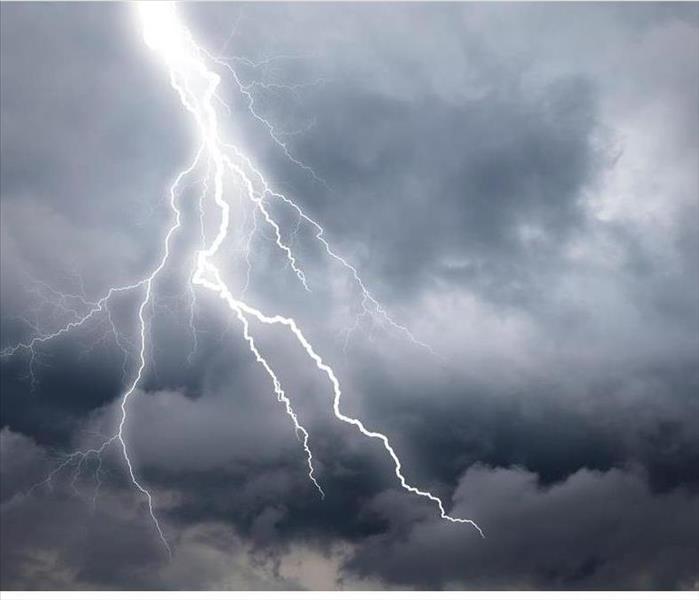 SERVPRO has a team of licensed water damage restoration professionals who are ready to restore your home or business after storm damage at any time.
SERVPRO has a team of licensed water damage restoration professionals who are ready to restore your home or business after storm damage at any time.
5 Storm Preparation Tips
If you work in an area like Enumclaw, WA, that experiences frequent storms, you may be wondering what exterior maintenance steps you can do to help protect your business from the weather. Fortunately, there are a few steps that many experts recommend.
1. Know the Weather in Your Area
One important aspect of storm preparation is to be aware of the weather. Knowing when you can expect a large thunderstorm or snow can allow you to prepare ahead of time. This can help you prevent possible damages.
2. Protect the Building as Needed
Depending on the weather you're expecting, you may choose to protect your building. Several possibilities include boarding over windows, or placing tarps over vulnerable landscaping. You may also choose to contact a local professional for a recommendation on preventive steps you can take.
3. Inspect Your Building Regularly
Another aspect of storm prevention is regular exterior maintenance. Scheduling a regular building inspection can help you find and repair any problem areas before they become vulnerable to a storm.
4. Keep up With Repairs
Keeping your building maintained can help prevent long-term damage. Conducting repairs to any damaged areas you find as quickly as possible can help you stay on top of the building's maintenance needs, and help prevent long-term repair cost.
5. Know Who to Call for Any Repairs
Another important step for storm preparation is to know who to call for repairs. In many cases a water damage restoration team can help with any flooding or water damages that may have occurred.
When preparing for a storm, these exterior maintenance steps may help you protect the building. Know what the weather in your area is going to do so that you can prepare beforehand. Inspect the property regularly, and conduct repairs as soon as a problem area is found. For large repair jobs you may want to contact a professional.

 24/7 Emergency Service
24/7 Emergency Service






